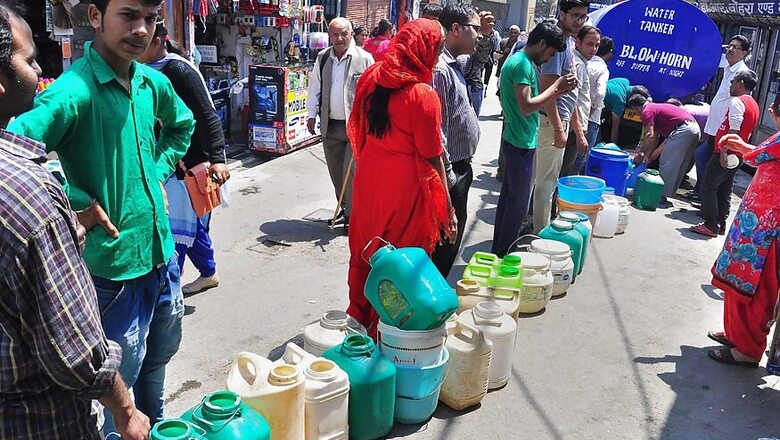
views
From last one month, water crisis has brought Shimla to its knees. The city is trying hard to ration water and experts are worried that this can become a reality for other tourist spots too.
The civic authorities have blamed leakages in the distribution network, a significant portion of which goes back to the British days, and diminishing water resources that have been over-exploited to meet the increasing demand for the tourism industry.
But what actually led to the water crisis in such a water abundant state?
Haphazard Urbanisation
Shimla, the picturesque old summer capital of the British, was one of India's first cities to get piped water. The first water supply scheme with a capacity of 4.54 MLD (million litres of water per day) started in 1875 to cater to a population of 16,000. Today, the city has expanded to 27.96 sq km hosting over 1.71 lakh people. The town has now been transformed into a concrete jungle with a series of indiscriminate constructions over the past few decades. Add that to poor planning and knee-jerk policymaking, the water crisis had long been coming.
Originally designed for a population of 25,000 people by the British, the city now has a population of well over 2 lakh. The arrival of about 3 lakh tourists each year further compounds the problem. And even as the city swelled, the authorities failed to add to the natural water-recharging concept introduced by the British some 150 years ago.
But the population explosion isn’t the only problem.
Contamination of a Major Water Source
Springs (chasmas), bowries — a type of wells constructed in the hill slopes to tap seepages — and perennial streams apart a few of shallow bores or hand pumps are the traditional groundwater sources of Shimla.
The largest share, however, came from Ashwani Khad, a spring on which the Himachal Pradesh High Court put a blanket ban two years ago after its contaminated water resulted in an outbreak of jaundice that affected more than 500 people in the city. Sludge from a treatment plant at Malyana, which had a faulty sewage treatment system, was flowing into the Ashwani Khad.
Depleting Reservoirs
With Ashwani Khad out of picture, water shortage in Shimla was looming large with the government officials estimating the city would fall short of about 14 MLD.
According to a fact-sheet released by Climate Trends, a Bengaluru-based non-profit, the reservoir levels in Himachal Pradesh are 56 per cent below normal for this time of the year. This is due to shifting monsoon a pattern of in the country caused by climate change.
While the five major water sources — Gumma, Giri, Ashwini Khan, Churta and Seog — have an overall installed capacity of 65 MLD, the city receives only 35 MLD on average throughout the year since about 40% is lost to leakages during the pumping and distribution phases. There is a dramatic decline in the availability of water at the two main supply schemes. The Giri scheme, with an installed capacity of 20 MLD, has been providing only 9.75 MLD, and the scheme at Gumma, the city’s oldest, has been giving the corporation about 10.6 MLD against its installed capacity of 21 MLD. The fact the administration has done little to compensate for the loss of reservoir water, may have led to the current crisis.
Scanty Rainfall
Climate change has induced erratic rainfall patterns, leading to a more concentrated downpour. This increases the risk of drought and flood, and in Shimla, where its hilly terrain forms runoff zone, whatever rainfall is there it is hardly retained. The reduction in the overall catchment area has further lowered the water table.
Moreover, there has been a huge departure of rainfall from the normal rainfall in post monsoon season last year to the pre-monsoon season in 2018. From Oct-Dec last year, the rainfall shortage stood at 64 per cent; 68 per cent in the winter season; and, 29 per cent from Mar 1, 2018 to May 31, 2018.
Dry Winters
Himachal Pradesh Chief Minister Jai Ram Thakur blamed the water crisis on lower than expected snowfall that caused rivers and streams to dry. His statement isn’t far away from the reality.
In 2018, snowfall in Shimla was less than five times that of the average. Not only this year, the trend observed since last nine years in the region tells us that the snowfall has been well short of the average.




















Comments
0 comment